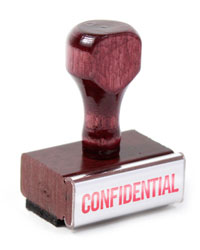Introduction
 Assistance & Protection
Assistance & Protection

In order to receive services and accommodations from their institution students with disabilities must identify themselves as students with a disability and disclose the nature of the disability to their DSO. Additionally, students with disabilities must substantiate this disclosure with appropriate documentation to verify the nature and extent of the disability.
Documentation guidelines will vary, depending on the nature of the disability and the documentation requirements of your institution, but in most cases documentation will:
- Be provided by a qualified, licensed professional (e.g., medical doctor, psychiatrist, clinical psychologist)
- Provide a clear description of the student's disability and/or diagnosis
- Be recent enough to state the impact of the student's disability on their current functioning
- Provide recommendations for accommodations that are appropriate for the student8
It is important to note that the nature of a student's disability and their documentation are strictly confidential. Your institution's DSO is also bound by the limits of confidentiality and cannot disclose the nature of a given student's disability or release any documentation to a third party without the expressed written consent of the student.
When an instructor receives a letter or notice from the DSO about a student, it will identify the student and the accommodations required, but will not state the nature of the disability or diagnosis. Faculty must keep all aspects of information regarding the student and accommodations strictly confidential. The student may choose to voluntarily disclose additional information about their disability to instructors and/or other students, but are not required to do so. It is not appropriate to ask students for additional information about their disability.9
Interacting With Postsecondary Students with Disabilities
Common courtesies to extend to people with disabilities include the following recommendations:
- Do not make assumptions about the presence or absence of a disability.
- Avoid attaching labels to people with or without disabilities. Some people have hidden disabilities such as epilepsy or asthma. Medical labels are undesirable and misleading, as no two people are alike. Medical labels say nothing about the individual and tend to reinforce stereotypes of people with disabilities as patients, powerless, and dependent on the medical profession.
- It is dehumanising to talk of people in terms of a condition. Do not use terms such as a dyslexic or epileptic - it is far preferable to say she/he has dyslexia or he/she has epilepsy, for example.
- Avoid using the word disabled as a noun (e.g., "the disabled"), as it implies a homogenous group separate from the rest of society. Everyone is an individual and people with disabilities do no constitute a group apart.
- Treat adults in a manner befitting adults. Do not patronize students with disabilities.
- Do offer assistance to a student with a disability, as appropriate, but wait until your offer has been accepted before you help (e.g., touching someone's wheelchair when not invited). Do not assume you know the best way of helping and listen to any instructions.
- Make eye contact and talk directly to the student rather than through an attendant or friend.
For further guidance on helpful ways to interact with students with disabilities, view A Way with Words and Images.
- 8. LD OnLine (2005).
- 9. Alberta Human Rights Commission (2010).
